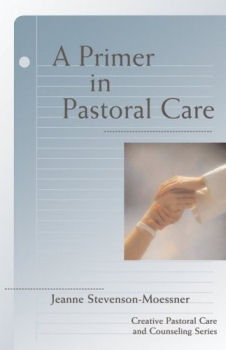
|
Posted November 16, 2005
Book: A Primer in Pastoral Care Author: Jeanne Stevenson-Moessner Fortress Press, Minneapolis, 2005, pp. 96 An Excerpt from the Introduction:
An Excerpt from the Book: The Subtext In pastoral care, we listen for the subtext. We assume there is more going on than is being said, so we stay attuned for the subplot, for the things that are too painful to be named or spoken. Emotional communication or emotional grammar is always going on alongside the verbal. The Holy Spirit comes to our aid if we are open to this type of intervention. In school, we memorize the alphabet, our ABCs. However, the grammar of care is not like that. It is not reciting. It is listening to others’ words, hearing between the words, and being open to both a spoken text and an unspoken subtext. It involves reading between the lines. You have perhaps attended a meeting with a sense of something else going on in addition to the stated agenda. This might be a power play, unspoken expectations, manipulation, or other issues that have not been expressed. There is a separate agenda going on “under the table” or in the “back boardroom.” Perhaps you have been to a social event where you sense other feelings, intentions, interactions, or posturing going on beneath the surface chitchat and social niceties. For example, if people are too solicitous and too complimentary, you wonder what else is going on with them. Do they want something from you? Are they trying to manipulate you? Are they flirting with you? Trying to seduce you? Distract you? Outmaneuver you? Are they feeling guilty about something? Is there something to to hide? You engage in self-talk, asking yourself these questions when you intuitively know something does not fit the situation. This can also occur in a pastoral care situation. You discern that something is missing or being left unsaid. The presenting problem — the “reason” the person gives for needing care — is not at the heart of the matter. You can always honestly ask: “I have a sense that there is something else troubling you. Is there anything else you might want to tell me? I feel I am missing something..” You can put this in your own words. This query may help in trying to find the subtext, which is not dissimilar from the subtext in a mystery novel. Continue to listen, for there is certainly more to the story. Table of Contents: 1. The one-room schoolhouse 2. The grammar of care: pointers and precepts 3. The prism of pastoral care: scripture refracted 4. The community at classroom: avoiding compassion fatigue 5. The open classroom: places of care 6. The open classroom: more places of care 7. An alphabet of grace |
|
